1. Chuck Eye Steak (Poor Man’s Ribeye)
The chuck eye steak comes from the beef chuck roll and is an extension of the beef rib/ribeye roll.
Meaning, the chuck eye steak shares similar qualities to that of the ribeye steak as they are right next to each other.

However, as you get closer to the front of the cow (ribs 2-3), these shared qualities start to diminish.

Chuck eye steaks contain wonderful marbling that’s common with rib steaks, but also contain larger complexus muscles, which are surrounded by swaths of fat.
The complexus muscle is similar to the ribeye cap or spinalis dorsi that many people often rave about (pictured below).
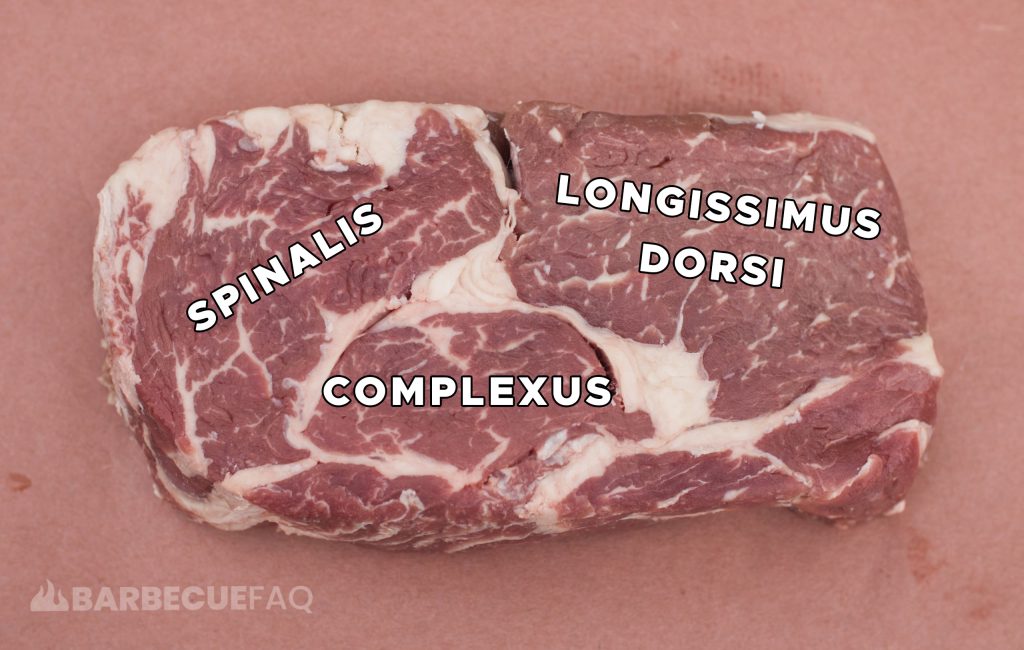
A huge benefit of this cut of steak is that it’s rather cheap, especially in comparison to typical ribeye steaks.
It’s beefy and fatty, but less tender than a Ribeye steak.
2. Ribeye Steak
Ribeye steaks are likely the most popular cut on the entire cow.
Ribeye steaks can be cut to be:
- Thick or Thin
- Bone-in or boneless
- Eye isolated or cap removed
Steaks taken from this section have varying degrees of different muscles – namely the rib eye, the cap, and complexus.
The main muscles that people pay attention to are the “cap” or spinalis dorsi muscle and the “eye” or longissimus dorsi muscle.
For example, here’s a rib steak that’s roughly rib number 9 on a cow – with a solid eye and cap.
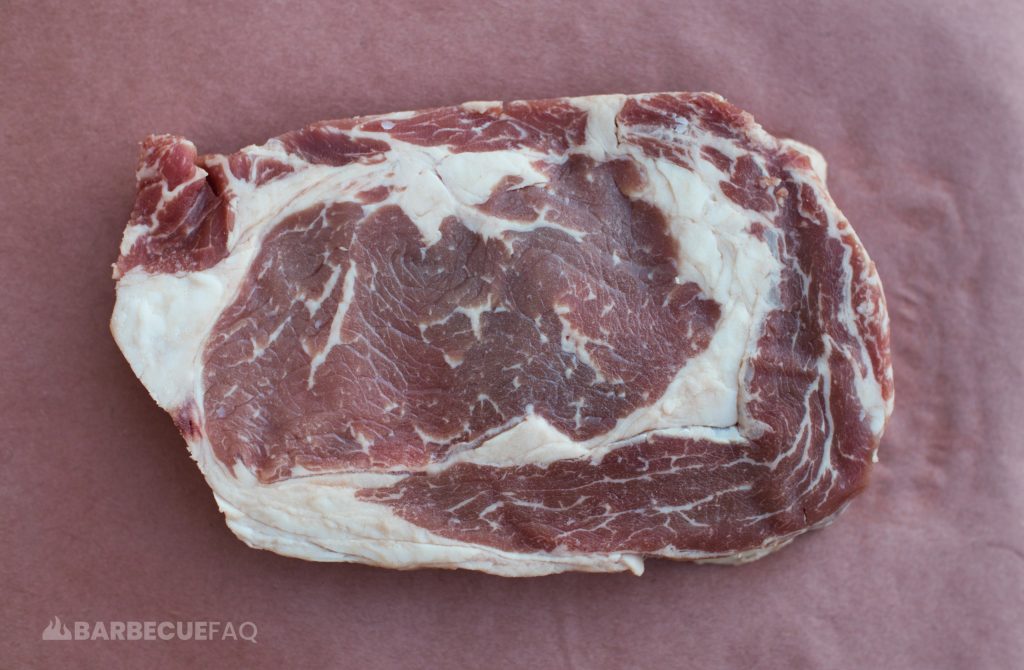
Now here’s roughly rib 6.
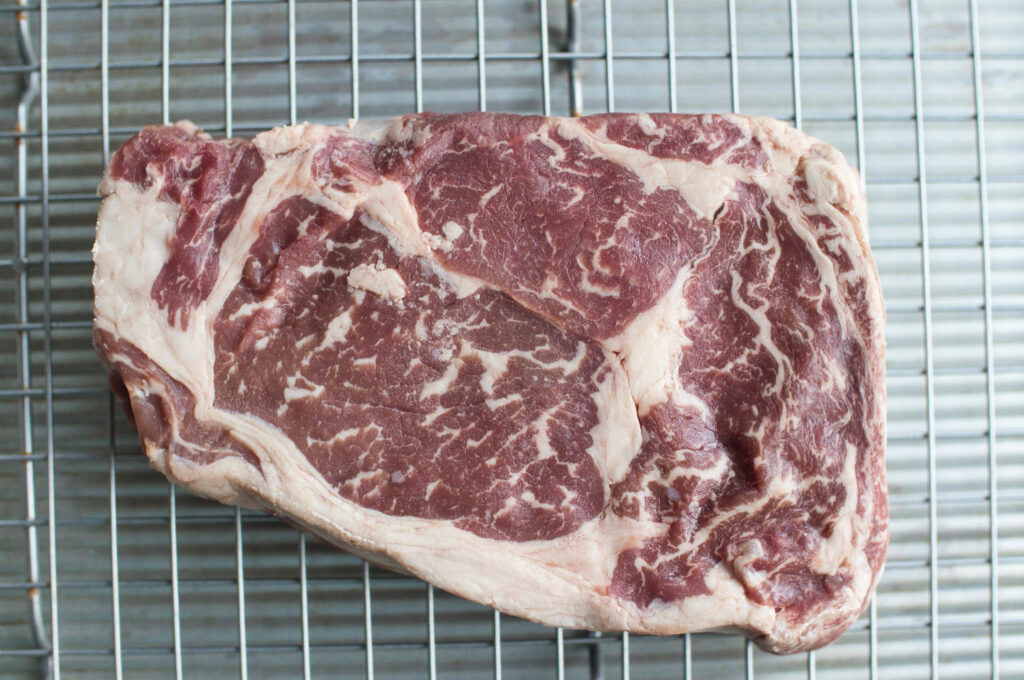
Steaks from ribs 6, 7, and 8 will have large caps and steaks 9, 10, 11, and 12 will have larger eyes.
Similarly, the complexus muscle will disappear as you move towards the back of the cow.
Regardless, the cap and the eye will have significant marbling that aids in adding tenderness and succulence to the steak – the best way to describe it is “buttery” rich.
3. Skirt Steak
Skirt steak used to be considered offal (refuse/waste) or organ meat.
Today, this cut of beef is considered one of the best on the entire animal.
From a single steer, there are 2 inside skirt steaks and 2 outside skirt steaks.

You can read about the other differences in this article.
Unlike the other beef steaks discussed in this article, skirt steak isn’t naturally tender – it’s a tough cut with large muscle fiber bundles.
To help combat this, the meat is typically marinated with acidic marinade ingredients and since it has a loose grain, it will take well to marinade.
Skirt steak is a fairly fatty cut of meat and due to this fat, you can actually cook to around a medium doneness without drying the meat out and overcooking it.
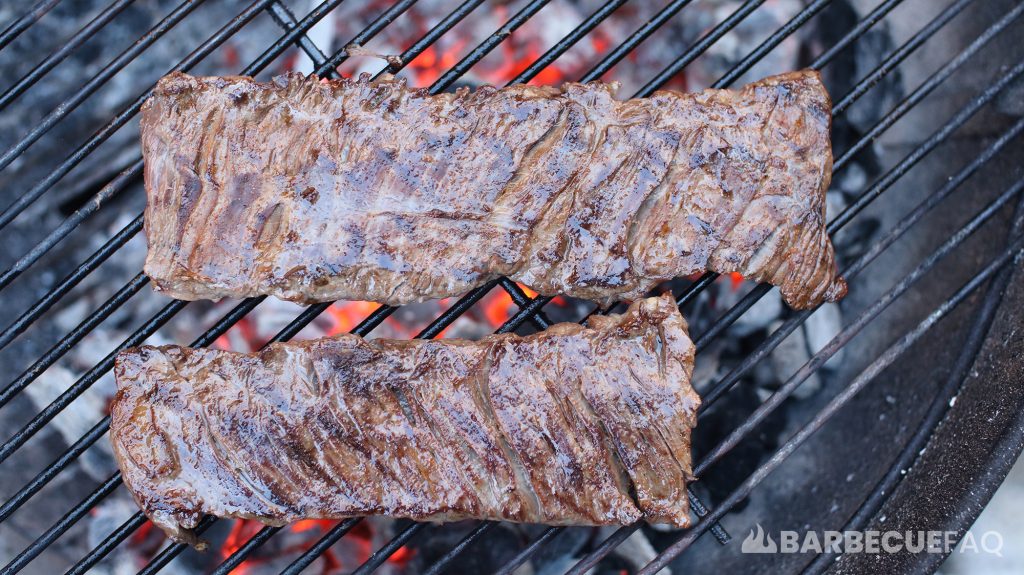
This is unlike flank steak where it only gets dryer and tougher as you go to higher internal temperatures (because it lacks fat).
Slicing the meat into smaller strips and against the grain results in a tender cut of meat.
4. NY Strip and/or T-bone
Ribeye and the NY strip steak contain the same main muscle – the longissimus dorsi.

Only, this muscle is less tender in the short loin, than it is in the Ribeye since it’s further from the legs.
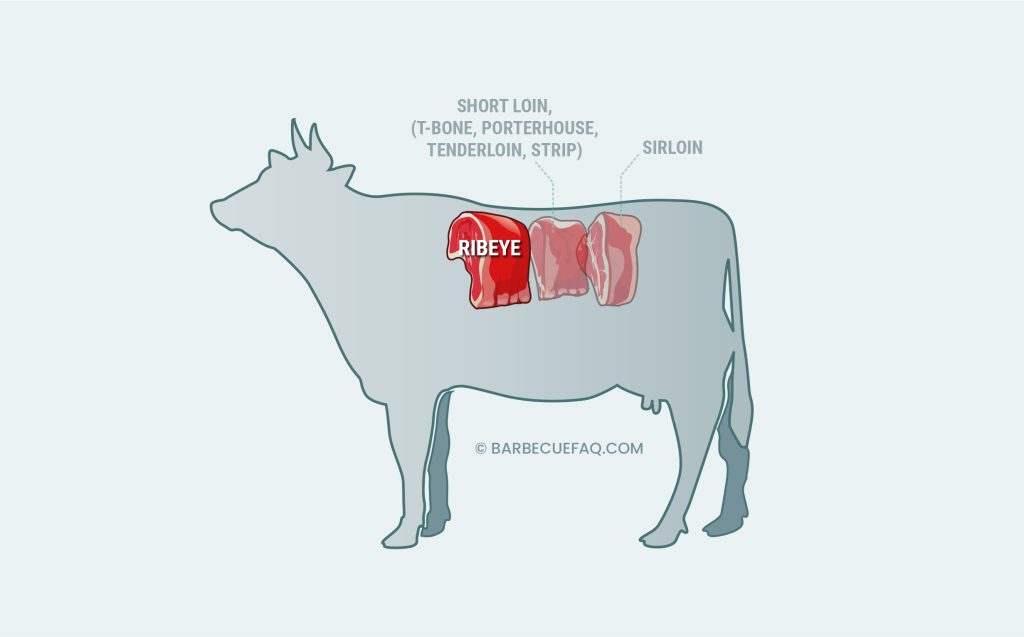
The NY strip isn’t nearly as marbled as the ribeye but depending on grade it does contain a fair bit.
Due to this, it’s more “beefy” tasting because of the leaner meat, less tender due to being near the legs, but still somewhat fatty.
To make up for the lack of fat, butchers will leave a band of back fat on NY Strip, T-bone and Porterhouse steaks.
This back fat isn’t meant to be eaten, rather it aids in adding flavor during the cooking process.
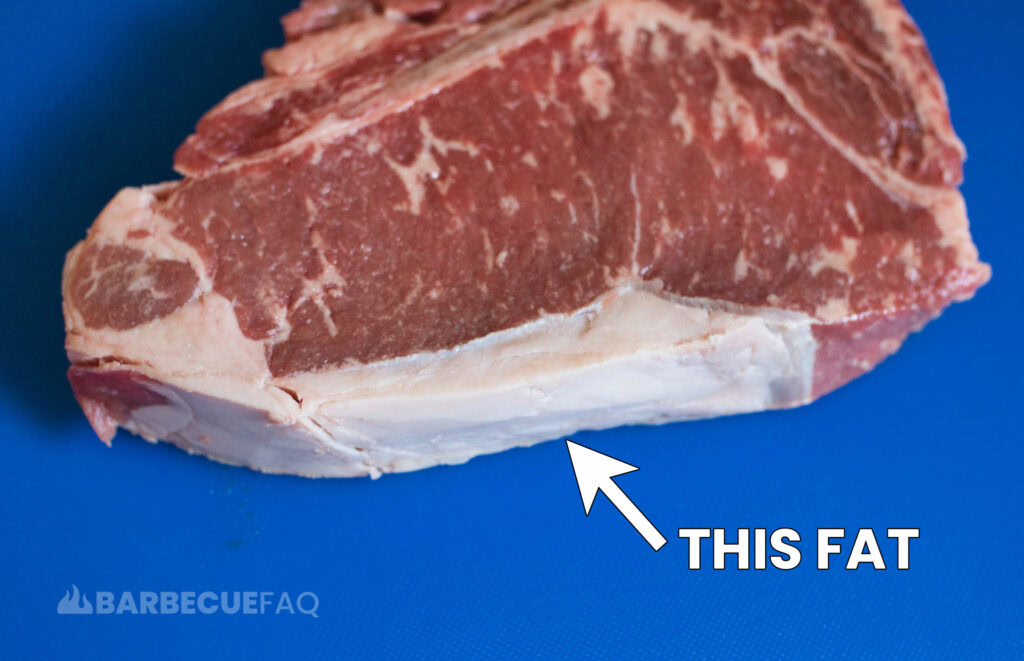


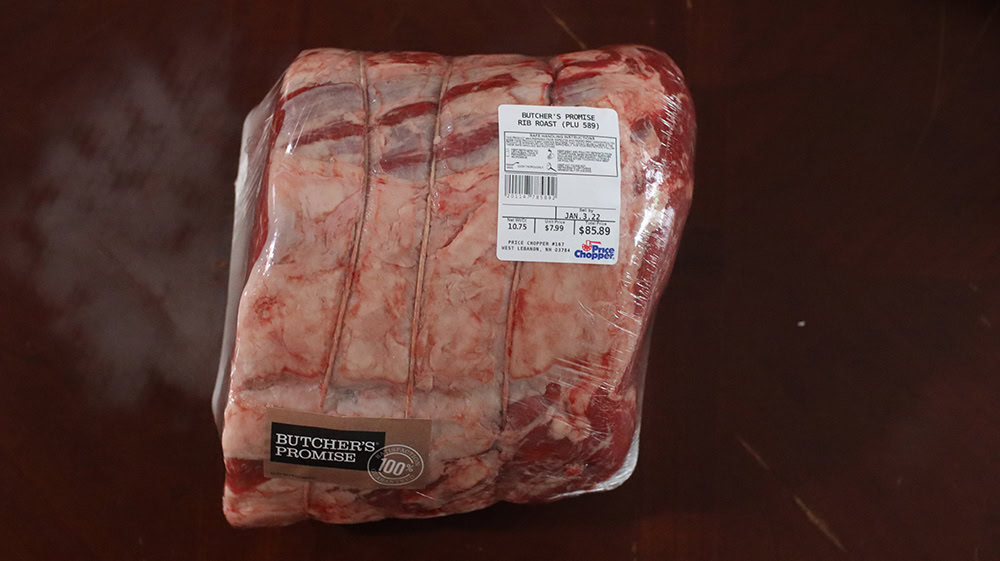
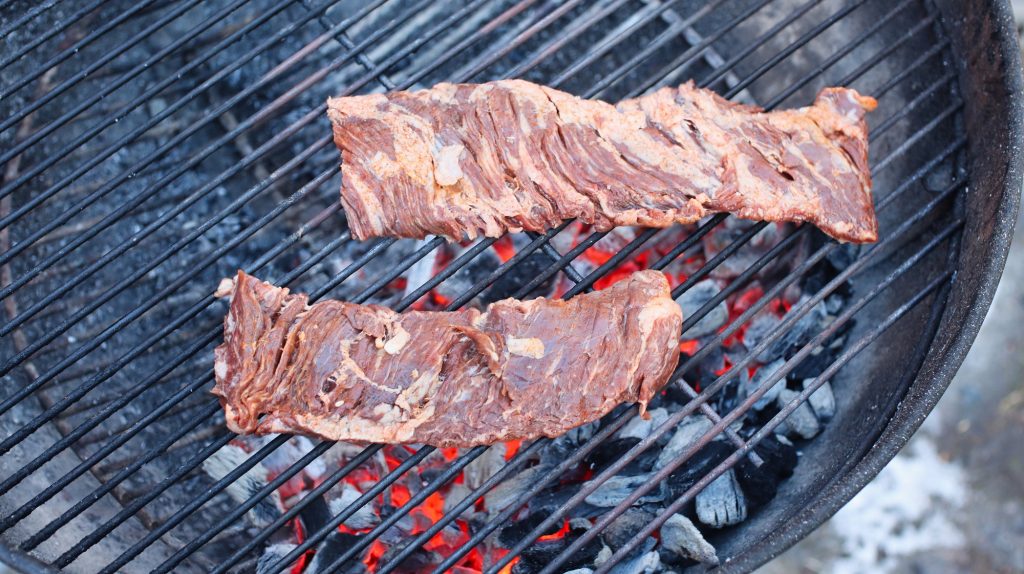
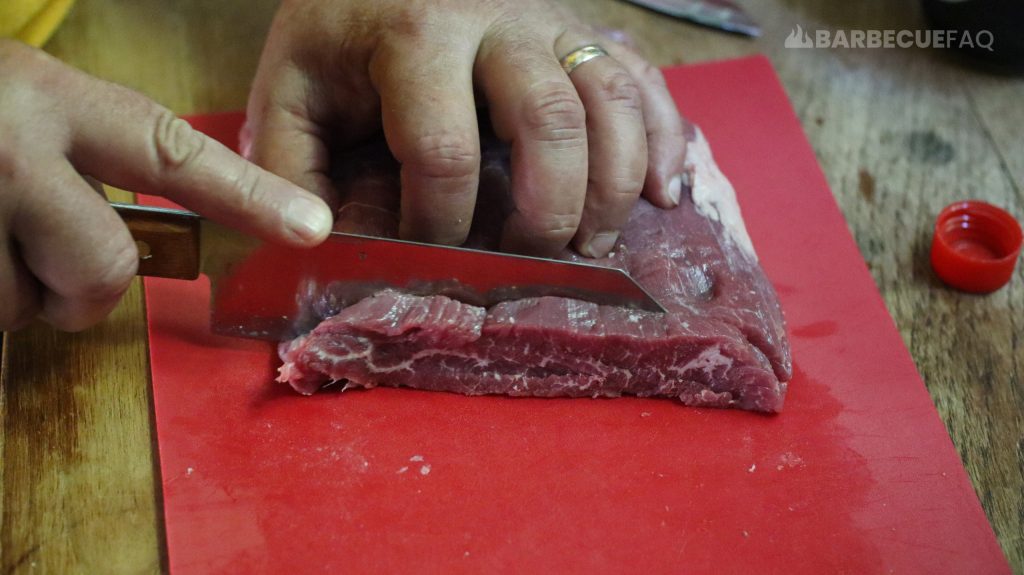
2 comments
Season Lopes
Thank you so much as this was laid out so simply I could follow it. Going carnivore requires a better knowledge of fatty beef beyond a now very expensive Rib-Eye. I feel better armed to go into the butcher and ask for what I need. Excellent job, especially with the pictures.
Dylan Clay
Happy to help!
-Dylan